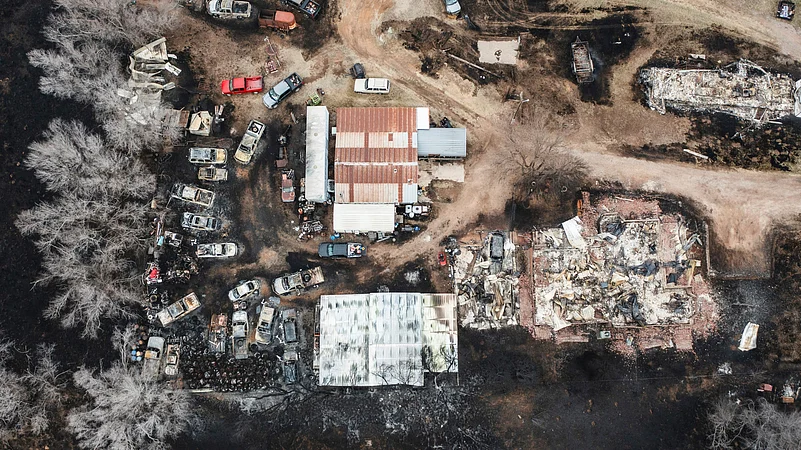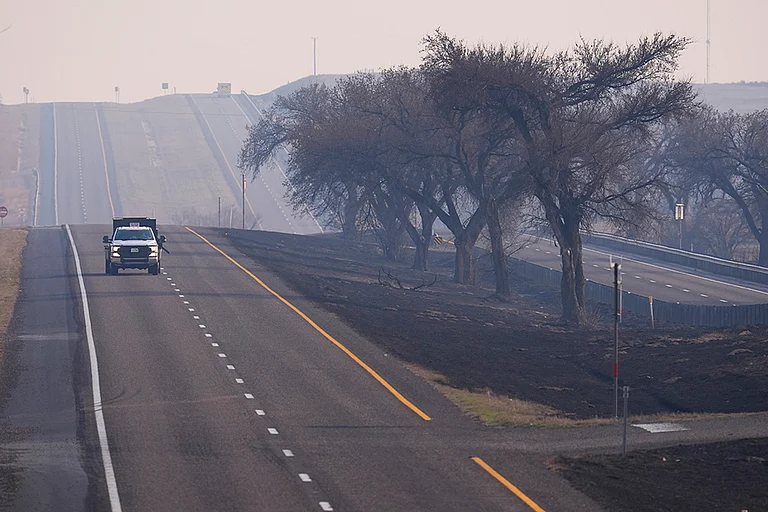Texans are grappling with the aftermath of a series of wildfires that swept through the panhandle region, leaving behind a path of destruction and uncertainty. Despite efforts to contain the flames, the fires continue to rage, fueling fears of prolonged recovery and lasting economic impact on the state's vital agriculture industry.
The heart of Lone Star State cattle country has been ravaged by fast-moving flames, consuming approximately 2,000 square miles of grasslands crucial for sustaining tens of thousands of cattle. With over 3,600 animals perishing and many more facing euthanasia due to severe injuries, the toll on farmers and ranchers is immense. Texas Commissioner of Agriculture Sid Miller warns that the road to recovery will be long and arduous, with the regrowth of grasses and the restoration of ranch infrastructure expected to take years.
The wildfires come on the heels of a series of environmental challenges, including flooding and drought, exacerbating existing vulnerabilities in the region. Jared Blankenship, a rancher and farmer in Hereford, reflects on the cyclical nature of weather extremes, emphasizing the resilience required to navigate life in the panhandle.

Despite efforts to contain the fires, what was already the largest wildfire on record in Texas continues to expand. The Smokehouse Creek Fire, spanning over a million acres, shows no signs of abating, posing significant challenges for firefighting efforts. While progress has been made in containment, authorities brace for the possibility of further escalation as the blaze defies containment lines.
The unprecedented scale of the wildfires underscores broader concerns about climate change and its impact on weather patterns. Professor Char Miller IV highlights the role of global warming in exacerbating weather extremes, contributing to heightened fire risks not only in Texas but across the West and Southwest.

In addition to the immediate devastation, the wildfires have inflicted severe economic repercussions on farmers and ranchers. The destruction of fencing, barns, and livestock represents a significant financial burden, compounded by previous agricultural setbacks such as failed crops and limited harvests.
As affected communities grapple with the daunting task of rebuilding, solidarity and support have emerged as essential pillars of recovery. Efforts to provide aid and assistance to farmers and ranchers are underway, accompanied by a concerted focus on mental health support through initiatives like the AgriStress Helpline.
While the immediate focus remains on containing the wildfires and mitigating their impact, the resilience and determination of Texans offer hope for a brighter future, even in the face of adversity. As the state rallies together to confront this crisis, the path to recovery will be marked by collaboration, perseverance, and unwavering resolve.





























